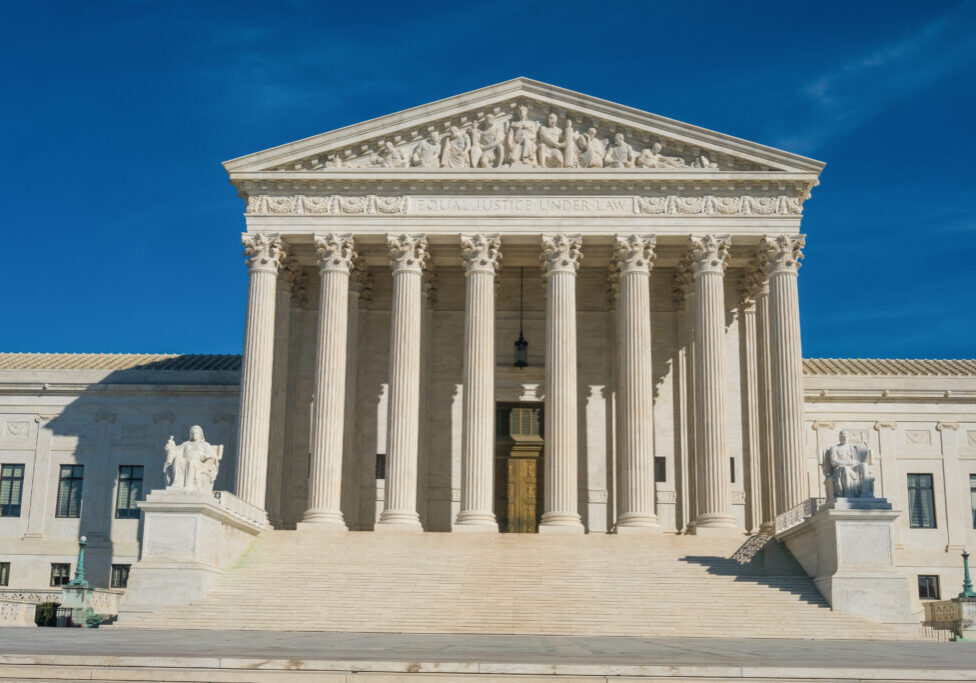The U.S. Supreme Court will take up the question of whether Oklahoma can fund a religious charter school with state tax dollars, the court announced Friday. The ruling, due in June, has the potential to shatter the separation of church and state by allowing the creation of religious public schools nationwide. The Washington Post’s Laura Meckler and Justin Jouvenal report:
The closely watched case tests how far the Supreme Court is willing to go in what has been a steady expansion in the use of tax dollars to support parochial education and a push by the high court in recent terms to enlarge religion’s role in the public sphere. … Charter schools are publicly funded but privately operated and must abide by many of the rules that govern traditional public schools. If the court allows states to directly fund religious charter schools, many existing private religious schools would be able to seek to convert to charter schools and benefit from full government funding, further eroding the line between government and religion.
Common-sense strategies to combat absenteeism
A pilot program is helping a small school system in East Baton Rouge Parish to decrease the number of students missing class. While Louisiana’s statewide absentee rate increased last year, the share of students who were chronically absent at Baker High School decreased. The Times Picayune | Baton Rouge Advocate’s Elyse Carmosino reports:
Both state and local officials have credited the improvements to a program Baker piloted with guidance from LSU last year, which tries to drive down absenteeism using common-sense strategies, such as contacting parents and discussing challenges and possible solutions with frequently absent students. The methods are common in many schools, but the pilot program helped the school ensure that every employee was using the strategies correctly and consistently.
How to improve government efficiency
Gov. Jeff Landry recently issued an executive order that created the state “Fiscal Responsibility Program” to probe for efficiency and savings in government and the possible elimination of services. Raghu Krishnaiah, chief operating officer at University of Phoenix, in a guest column for Route Fifty, explains why making governments more efficient is about more than just cutting costs:
The public sector is under pressure to do more with less, but unlike companies, which run primarily on a profit motive, governments must balance a range of objectives — everything from societal welfare to political realities. This complexity can slow efforts to streamline operations, and it raises a key question: How can governments boost efficiency without losing sight of their core missions? … In the end, improving government efficiency is about more than just cutting costs. It’s about building systems that work better for the people they serve and giving public employees the resources and authority they need to demonstrate just how good they can be.
What pause on infrastructure spending means for states
President Donald Trump issued executive orders last week that paused spending from two major infrastructure bills – the Inflation Reduction Act and the Infrastructure Investment and Jobs Act – from the Biden administration. Governing’s Jared Brey explains how state and local transportation officials are trying to interpret the order:
Jim Tymon, executive director of the American Association of State Highway and Transportation Officials, says the language of the order appears to affect all of the programs included in IIJA, which includes the vast majority of highway funding allocated to states. But based on conversations the group had with both agency officials and Trump administration officials, Tymon says the order is targeted at a small subset of programs, namely those aimed at promoting electric vehicles.
Note: Louisiana has received approximately $3.5 billion from the Infrastructure Investment and Jobs Act.
Number of the Day
197,000 – Number of Louisianans who use federal rental assistance to afford modest housing. (Source: Center on Budget and Policy Priorities)
